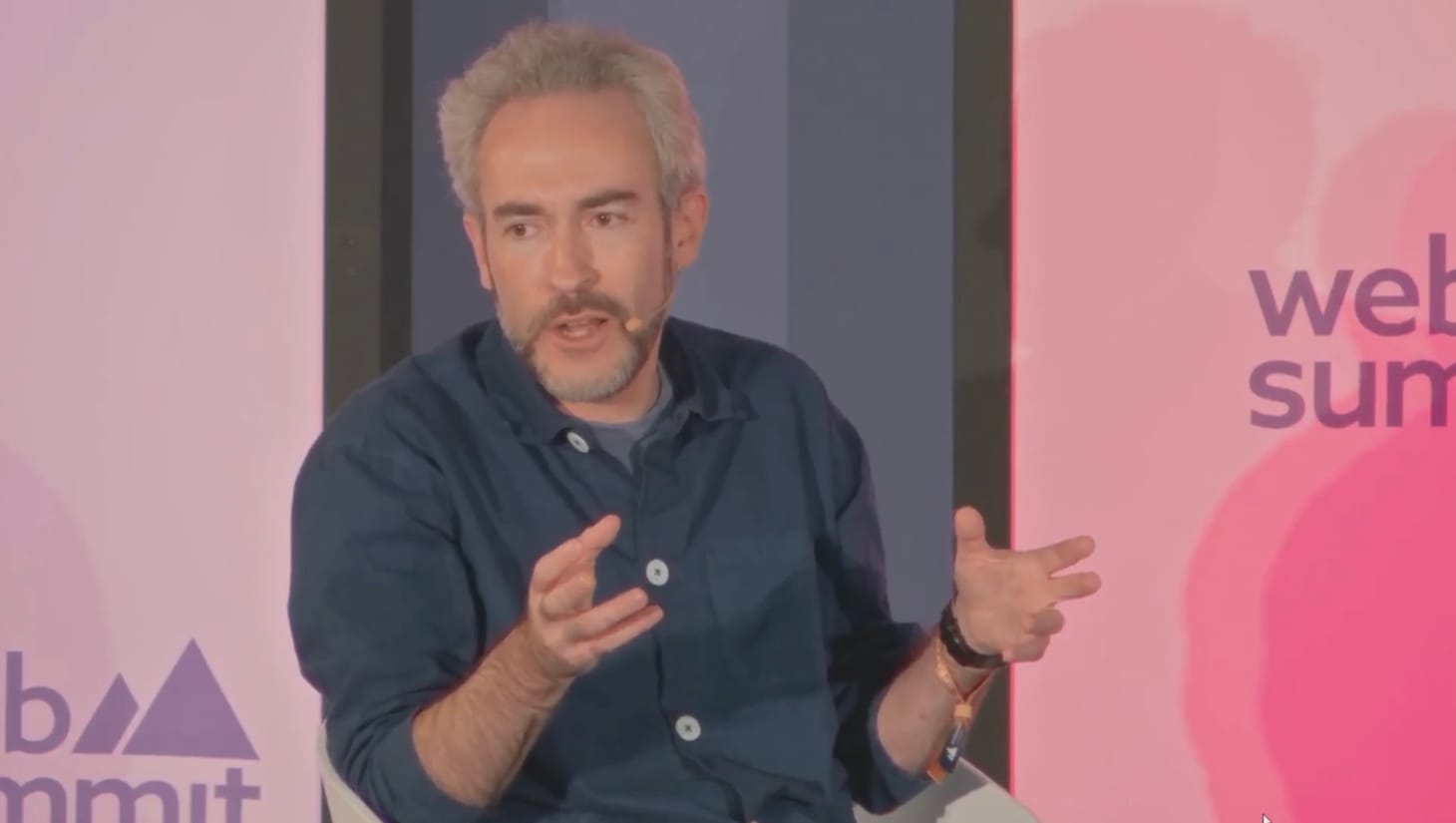My panel at Web Summit about how The Times newsroom uses AI
Talking about how AI is being used among journalists at The New York Times.

In November, I was on a panel at Web Summit in Lisbon titled, “Has AI Broken the Media?” We didn’t really discuss that provocative question, but I did get to talk about how AI is being used among journalists at The New York Times, where I'm in the editorial director of AI initiatives.
The other panelist was Matthew Garrahan, head of digital platforms for The Financial Times, and our moderator was Jennifer Strong, who hosts a great podcast, Shift, about "redefining trust in the age of automation." Jennifer helpfully published the audio of our panel as an episode of her show. I've transcribed my own remarks — which, to be clear, only represent my views — and published them below.
How we use AI in the newsroom
For us, it's really been three areas of focus.
And, actually, I should start with an area that has not been a focus of ours, which is, we really have no interest in using gen-AI to write articles. And we took that off the table right away, writing some principles, probably similar to what Matt was talking about. So we put that aside, but also laid the groundwork for how we would experiment with pretty much anything else.
And those three areas that we're working on are:
- One, investigative reporting. How can we help journalists throughout the newsroom uncover stories, largely in massive data sets, that just couldn't be told without the assistance of machine learning? I think that's a huge area of opportunity.
- The second is internal workflows. You know, the types of production work where you feel like you're a robot while you're doing it, or there might be opportunities to free up time to do more high-impact work. Looking around for those opportunities and helping our colleagues integrate AI into their work.
- And then the last is reader experiences, which is obviously a whole huge area, and we work with lots of other parts of the organization. Our job is really to kind of prototype what might be possible, to get some answers to the most important questions. The ideas around gen-AI, how you could use AI for news are often, I think, kind of obvious, or we're not lacking for ideas. We are lacking, at this stage, I think, for answers to, is it doable? And if it's doable, is it any good? And is this something that meets the standards of The Times? And most important, is it meeting a demand or need that our readers have?
AI for investigative journalism
Yeah, I mean, I think there's quite a lot of opportunity there. And when we're using AI in the background as a reporting tool, one, “tool” is the key word there. Like, we're using it. We're in control. It's critical that there's human oversight and review throughout the whole process.
And, generally, we're not even using generative AI to generate anything. I think, actually, that misnomer has caused a lot of confusion about the potential of the technology. The same technology that allows it to spit out what's seemingly original prose can also be used simply to better understand and organize your own content or to search through a massive document set for topics of interest. So, to me, that generation part is almost the least interesting aspect of AI.
Avoiding errors when using AI
Never trust output from an LLM without taking steps to verify the information. What those steps are tends to be different depending on the context. But, for instance, we published, about a week before the election, a big investigation into an election interference group where we had hundreds of hours of videos of their private meetings; used AI to transcribe and search through it; and it was extremely helpful and made the story possible to begin with. There weren't even 500 hours between when we got those videos and Election Day, so we needed some machine assistance if the story was going to get out.
But before getting anywhere close to publication, we went back all the way back to the original material, one, to verify our transcription was correct, but two, that we weren't missing context and treating the quotes we were using fairly in the context in which they were said and so forth. So, very often, if there's any form of of AI going on inour process, it's in the middle. It's human first and human last. End-to-end verification process is how we avoid that particular problem of — I don't like hallucinations, it feels like a euphemism — of bullshitting.
Disclosing the use of AI
Well, we have a similar commitment as the FT and have made public our policy to be transparent about any use of AI. And in the newsroom, where the debates have tended to be, is like, where and in what form that disclosure should come. So, for instance, we might use an LLM to draft some suggested SEO headlines — search engine optimization headlines — and let an editor pick one and edit from there before it gets published. Do we need to put like a big red "AI-drafted” label next to that headline? I mean, we're not doing that. We have a page on our site that explains we sometimes do that, and I think that's sufficient.
You know, you see some experiments in other news organizations with generated search results that are not being reviewed before you see them, more similar to how a ChatGPT or Claude would respond to you. And those tend to come with what I would more call like a disclaimer, like, "Actually, this might be all wrong. You should go check this yourself." I gotta say, I'm happy that news organizations are experimenting, because we can all learn from that. But those disclaimers drive me nuts. It's so antithetical to what journalism is. Our principle is we never want to shift the burden of verification to the reader. And so, if we're going to put something out and then say, "but also, it's on you to check and make sure it's true," it seems to me an abdication of our responsibility and, frankly, the whole value of why The New York Times, Financial Times, and other news organizations exist.
Next phase of AI use
Yeah, I'm acutely aware that like one really high-profile mistake, even if in the scheme of things it's not that important, could set back a lot of this work several years, and we want to avoid that at all costs.
Our focus for the next six months is kind of similar [to the FT's], and maybe the theme is we're ready to mature some uses of AI in the newsroom, from pilots and experiments to being integrated more directly into our CMS and other other tools that we're using. So, you know, in a way, it recedes into the background, like all software does over time, and it's less novel.
And then, when it comes to investigative journalism, our approach is to find really challenging data problems within the newsroom. Usually the problem being, "I have too much data," try to assist, but with an eye toward building tooling that can help when the next similar challenge comes along. So that, ideally — and, I don't know, this will take longer than six months — our whole newsroom is empowered to do the kind of massive, needle-in-a-haystack searching in big data sets that now is sort of, you know, a quite technical challenge.
Read more from Zach
Sign up to receive occasional emails with new posts.

